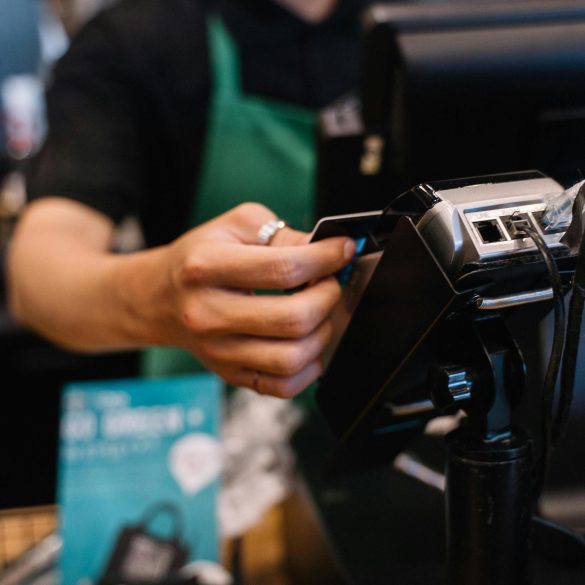AI Budgeting Apps for Peru: The New Rules of Personal Finance (2025 Edition)
Let’s be honest: managing money in Peru in 2025 is a wild mix of old-school habits (my mom still stores soles under the mattress) and the cutting edge—fintech, AI, open banking, crypto, you name it. I’ve spent years fumbling through spreadsheets, budgeting notebooks (you should’ve seen my 2018 New Year’s resolution disaster), and too many “genius” apps that gave generic dollar advice while my BCP account stubbornly quoted everything in soles. Then last year, I stumbled across an AI-powered budgeting app designed for Latin America, and it flipped my expectations. Frankly, I’ve never looked back.
More than once, sitting with colleagues at a Lima coworking space, I’d hear the same thing: “How do you manage your gastos with inflation and dollar volatility? Spreadsheets again?” The honest answer? Modern AI budgeting apps (think Fintonic, QuipuBank, Yape’s analytics)—if you know how to use them—can make you feel like you’ve finally got a CFO hiding in your pocket. And trust me, in Peru, where tomorrow’s exchange rate still surprises everyone, that’s a lifesaver.
But what exactly are AI budgeting apps, why do they matter specifically in Peru, and how do you avoid classic pitfalls (mistakes I know firsthand)? That’s where we’re headed. We’ll walk through the real-world value, the best local and international options, how to actually use them with Peruvian banks, the privacy and regulation quirks, and, crucially, how to use AI-powered insights intelligently—not just as a digital magic trick.
Why AI Budgeting Apps Matter in Peru Now
Here’s the brutal truth: almost half of Peruvians still don’t fully trust conventional banks, but nearly everyone has a smartphone, and a hefty chunk now pays bills through apps like Yape or Plin1. That contradiction is where AI budgeting apps shine. These apps bridge the gap between informal street vendor transactions and the big, intimidating world of personal banking—even more so with the cost-of-living squeeze and digital payment boom post-pandemic2.
Personally, my budgeting game changed only when Peru’s inflation spiked, and my rent—supposedly fixed in soles—jumped anyway. Back in 2021, I would’ve shrugged and hoped for the best. But now? AI budgeting apps spot those cost fluctuations, connect purchases (even from bodega QR codes), and nudge you about “hidden” spending habits before you’re at the ATM scratching your head. These insights matter when you’re trying to balance everyday gastos with saving for a backpacking trip to Cusco or building an emergency fund that actually works.
What Is an AI Budgeting App? (Peru Edition)
Let’s get basic for a second—because I’ve learned the hard way that plenty of “budgeting apps” are just glorified spreadsheets with a fancy skin. AI-powered budgeting apps actually analyze your income, spending patterns, and goals, then predict (with real machine smarts) where you might overspend, flag suspicious transactions, and tailor financial advice to your personal mess.
The “AI” part matters in Peru because we deal with wild swings: fuel price shocks, school fee surges, or delivery purchases from apps that ping your account in weird currencies. Modern apps use machine learning models trained on Peruvian (and wider LatAm) transaction data. So you don’t just get generic US advice—you get suggestions that understand when your Movistar bill doubles (again), when the gas price changes mid-month, or when your remesas land in USD but bills are stubbornly in soles.
Key Insight
Most Peruvian-centric AI apps now automatically categorize informal cash and Yape-movement, not just bank transfers—a game-changer for blending old and new money habits.
“Smart budgeting isn’t just tracking receipts—it’s predicting those moments when Peruvian utility prices spike or when your informal gig income shifts. That’s where AI delivers.”
Key Features That Actually Work for Peruvians
Here’s where the details really matter. Having tested a half dozen apps (often out of sheer frustration), I’ve found most US or European “top budget” tools choke on Peruvian realities: Soles and US dollars in one account, remesas from relatives, plus a side stream of freelance or pymes cash. If an app can’t read both your BCP/Tinkuy account and informal Yape movements, it’s useless—trust me. So, what should you look for?
- Multi-currency support (soles, dólares, sometimes euros)—critical if you get paid in dollars and spend in soles.4
- Local bank and digital wallet integration. Seamless import from BCP, Scotiabank, Banco de la Nación, Yape, Plin, and even cash-in-hand records.
- AI-powered expense categorization, tuned for typical Peruvian expenses (mercado, bodegas, mototaxi, prepaid cell, utilities with variable rates).
- Pandemic-mode fallback: Can the app track online deliveries, many of which come via international (USD) or local (S/) sources?
- Smart reminders and real-time alerts—not just “your bill is due,” but “your gas expenses are up 18% this month.”
- Manual input that works: In Peru, cash transactions can make up half your expenses. Apps need easy, fast manual entry (it’s tedious, but essential).
Personal Lesson
Back when I ignored manual cash input—thinking my debit card caught “everything”—my budget missed an average of 26% of total expenses. Two months later, I wondered why I was broke. Enter: better apps, better results.
A Beginner’s Walkthrough: How These Apps Integrate with Peruvian Banks
Let me walk you through the silly mistakes and actual wins from my time onboarding three different Peruvian banks into AI budgeting tools. Early 2023? I trusted an app’s “automatic linking” to my BCP account. Huge mistake. It grabbed some info—missed others entirely. Manual upload of downloadables? Worked, but was tedious. Fast forward: open banking APIs in Peru have improved (mainly in 2024), and local AI tools like Fintonic or QuipuBank led the way.
- Link your accounts: The best apps offer secure API integrations to major Peruvian banks and wallets—look for OAuth or token-based connections, not just username/password.
- Review permissions: Many over-request access; only grant read-only (unless you want direct transfers).
- Test syncing: Move small amounts to see if they register—especially for cash-ins via Yape and Plin.
- Categorize everything: Confirm the app correctly labels “Mercado Surquillo” as groceries, not “unknown purchase.”
- Check for dual-currency errors: Apps sometimes convert soles to USD at the wrong rate, so double-check transaction records in both currencies.
| Feature | Fintonic Peru | Yape Analytics | International Apps (e.g. Mint) |
|---|---|---|---|
| Multi-currency Support | Yes | Partial | Rarely |
| Local Bank Integration | Yes (most major) | Yape Only | Limited (manual upload) |
| Cash Transaction Tracking | Manual/AI Blend | Strong | Poor |
| Real-time Alerts | AI-powered | Basic | Generic |
Ever notice how transaction syncing fails most when you need it most? What gets me: Friday evenings—salary deposits, rent due, and three different platforms, all fighting for mobile data. My advice: set a weekly “sync and sanity” review, not just monthly, to avoid AI-driven mis-categorization stacking up (been there).
“It took me weeks to trust AI with my cash-via-Yape transactions. Now, I don’t sweat the small stuff: the app does trend analysis—even for my kids’ chores pay.”

Cultural Realities: Cash, Informal Savings, and AI
Let’s step back for a moment. In theory, Peru has gone “digital.” The numbers say so. But honestly? Walk the streets of Arequipa or even urban Lima, and cash is still king5. The “envelope method” persists, with soles set aside for rent, food, fiestas, or even bribes—every wallet with its secret compartments. I vividly remember a taxi driver who refused to use anything electronic, not because he distrusted the tech, but because “la economía informal es más segura.” He’s not wrong; local dynamics run deep.
So where do AI budgeting apps fit in a country where cash and “untraceable” side hustles are still the norm?
Crucial Takeaway
Don’t abandon traditional methods overnight. Instead, use the app to map informal flows: create custom cash categories, set reminders for envelope top-ups, and label “off-book” transfers. That’s how you get honest data—and honest AI insights.
- Use manual cash entries religiously—don’t fudge the numbers. Painful, I know, but essential.
- Customize categories: “Quinceañera cash gift,” “Bodega snacks,” “Moto-taxi,” and “Mercado savings jar.” AI will learn (shockingly fast).
- Set location-specific reminders. For example: “If at Gamarra, track cash spend now.”
- Snap photos of receipts or handwritten totals; most apps process images via AI OCR.
Quick story: I once tried ignoring my Saturday “off-platform” spending—“It’s just minor stuff!”—and lost S/150 in untracked spending every month. What finally fixed it? An app that nags (gently, but persistently) for every cash withdrawal and offers up AI “spending leak” estimates.
“If budgeting apps ignore Peru’s informal economy, they’re missing half the picture. The best tools adapt to our hybrid habits—cash, digital, barter, and all.”
Privacy, Security, and Financial Regulation in Peru
I’ll be frank: even after years in Peru, I still get nervous linking a financial app to my main account. There’s a real—and valid—worry about data leaks, phishing, or breaches6. The government does regulate digital finance (since the Ley de Protección de Datos Personales updated in 20217), but reality on the ground? Varies widely. Some apps double down on encryption and two-factor authentication. Others… well, be very cautious.
| Security Feature | Recommended? | Example | Pitfall |
|---|---|---|---|
| End-to-end encryption | Yes | Fintonic (LatAm-specific) | Some apps claim but don’t deliver |
| Two-factor authentication | Essential! | QuipuBank, Yape advanced settings | Too many SMS-based can be spoofed |
| Read-only bank access | Best risk-reduction | Supported by most Peruvian APIs | Some apps over-request “full” access |
What’s my rule of thumb? If an app doesn’t transparently list exactly what data it collects, why, and how it’s stored, I bail out. And never give write-access unless you absolutely need direct money movement—read-only connections are typically enough, with multi-factor authentication locked in.
“Financial education is as important as cybersecurity. Peruvians must demand both—especially as AI is embedded in daily finance.”
Tips, Mistakes, and Power-User Strategies
Alright, real talk—what mistakes did I make (so you don’t have to)? How do you level up beyond “tracking expenses” to actual financial progress?
- Set up AI-powered goal tracking: Don’t just record spending—establish medium and long-term goals (travel, renovations, education), and have the app tune alert thresholds until you hit them.
- Review category mislabels monthly: AI is smart, but sometimes mistakes “Parque Kennedy” for groceries. Manual review is non-negotiable.
- Export your data: Keep a backup in .csv for taxes or emergencies (here’s looking at you, SAT inspections).
- Blend with traditional methods: Some months, “back to cash envelopes” backs up your AI-driven plan—use both strategically.
- Never ignore alerts: That gas price spike warning? It’s the difference between an easy month and a nasty surprise. (I ignored one in March and regretted it all month.)
Expert Strategy
If you’re paid in dollars (USD) but live in soles (S/), program dual-currency tracking rules. AI apps can now automate blending and alert you to hidden currency-exchange drift. Priceless.
Resources, References, and Suggested Next Steps
Pause here. If you’ve made it this far, you’re more committed than 80% of folks who start a personal finance journey. Here’s the practical kicker: AI budgeting apps are not a magic fix—they’re a constantly evolving toolkit. What really matters in Peru (and anywhere) is honesty with yourself, systematic habits, and a willingness to let technology be your helper not your overlord.
Your Action Plan
- Pick one Peruvian-compatible AI budgeting app and commit to using it every day for three weeks. Yes, daily. Small steps compound.
- Manually log everything (including cash) for one month. Trust me—the AI will learn, and you’ll see the true baseline.
- Once a week, sit down and review the app’s insights with your family or roommates. Financial transparency = fewer surprises and more buy-in.
Knowing what I know now, I’d tell my younger self: don’t wait for the “perfect” app or the “right” time. The messy, real-time data of your daily life is more valuable than a dozen budgeting theories. Just get started, keep iterating, and let the AI amplify—not replace—your commitment.
Future-ready? As Peruvian fintech matures, expect better cross-border money tools, sharper fraud detection (though vigilance is always needed), and more user-empowered control over financial data privacy. I’ll keep updating this post as new breakthroughs hit the market—feel free to bookmark, revisit, and, yes, call me out on any missed opportunity (I’m learning too).
References



